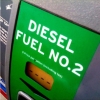RL Blogs

By Optimization Specialist Robert
Feb 01, 2016Guaranteed ways to increase diesel production that many refiners have not yet mastered. |
|
European refiners have focused on distillate optimization long before those in the U.S., but my travels around the world lead me to believe that all refiners can still benefit from increased focus on optimizing diesel production. For those U.S. refiners late to the dance, these tips will help you quickly catch up.
Similar to gasoline, diesel fuels have a long list of specifications that refiners must meet. Depending on your region and refinery configuration, different specifications will constrain your production. Differences aside, the following specs are the most common pinch points for diesel optimization:
Maximize the T90
First basic principle to maximize diesel production is to draw deeper in your fractionator to recover diesel out of gasoil. Whether it’s the crude atmos tower, FCC main frac, Coker frac or any other fractionator producing a diesel cut, many refiners do not push the most basic spec in diesel production.
Maximize Sulfur
Yes, this is a very restrictive spec, but it’s highly likely that you still have room to increase your product sulfur. In the Ultra-Low Sulfur Diesel world that we live in, a good rule of thumb is to say that 1 ppm sulfur giveaway on diesel product equates to 3 months of catalyst activity.
Can you afford to give up that much catalyst activity? If not for the sake of expense reduction alone, extra catalyst activity can provide additional benefits. From increased hydraulic capacity to higher processing of cracked stocks, maximizing product sulfur carries strong benefits.
Minimize Cetane
If Cetane spec limits diesel production, your refinery likely maximizes LCO into diesel or processes a fair amount of synthetic crudes. Both have extremely high incentives. The first order of optimization is to ensure that you’re monitoring cetane giveaway in the first place. Whether you blend to a Cetane Number (CN) or Cetane Index (CI) spec, giveaway has a high penalty when it comes to cetane.
After establishing a monitoring program, a refiner can further optimize cetane by distinguishing between Number and Index. Many refiners do not have cetane engines in their lab, thus do not test Cetane Number. These refiners utilize ASTM D976 or D4737 to calculate a Cetane Index (CI).
As with any multi-variable correlation, the R^2 for Cetane Index does not equal 100, which leaves money on the table. ASTM D4737 is a better predictor if you blend cracked stocks into the diesel pool. D976 tends to over-predict cetane in general. This leaves refiners with wide buffers that translate to giveaway.
My suggestion is to invest in using a cetane engine to test Cetane Number. LCO uplift or synthetic crude processing can easily be worth $5+ Million a year. Understanding the diesel Cetane Number can also allow you to use cetane improver to meet specification. Improver does not affect Index, so it’s only a handle available to those who test for Number.
Manage Cold Flow Properties
Depending on region, your diesel can be limited by one of the following cold flow properties: Pour Point, Cloud Point, or Cold Filter Plugging Point (CFPP). It all means the same thing, which is reduced endpoint on the diesel product.
As mentioned above, maximizing diesel T90 is paramount, but cold flow spec limitations often thwart these efforts. Many refiners give up and assume that they cannot do any better. The more imaginative refiners out there know that there’s money to be made by further optimizing diesel around this constraint.
If your refinery has capabilities of blending jet fuel into diesel, then utilize this flexibility! If you do not have this degree of freedom, then build it!! I don’t care if Jet fuel is worth more than Diesel… I can guarantee you that you make up your jet loss through the upgrade of gasoil to diesel.
Viscosity and Density
Similar to managing cold flow constraints, one can use jet or heavy naphtha blending into diesel to alleviate viscosity and density constraints. Oh yes, I did say blend naphtha into diesel. You don’t win in this tight margin business unless you think outside of the box. This is one easy way of maximizing diesel production.
Got Flash?
Speaking of blending naphtha into diesel, monitoring product flash is a big enabler to achieving this unconventional strategy. Many of us have adjusted to the fact that Diesel product has higher value than Gasoline product. So what’s holding your refinery back from maximizing how much naphtha you put into diesel?
In addition to alleviating many of the specs above, minimizing the diesel flash pays off as a direct upgrade of gasoline into diesel production. That being said, remain mindful of the spec buffer as correcting offspec flash can pose a challenge to many.
Aromatics
Some regions carry a stringent spec on diesel aromatics. Some refiners have invested heavy capital in aromatic saturation units, but this is obviously a costly solution. Lower cost alternatives can be upgrades in catalyst formulation, such as advancing from conventional CoMo and NiMo mixtures to using noble metal catalyst.
But before heading down any path of investing cost, try pushing the capabilities of existing equipment. Dilution is often times the solution, so again, I reckon that putting some effort into blending jet or heavy naphtha into the diesel pool can provide additional flexibility.
Almost all refiners have a gasoline blender that focuses on gasoline blending operations. However, the same cannot be said about optimizing diesel blending. It’s not as complex as making gasoline, but that does not mean there isn’t a lot of money being thrown away for sub-optimal operations.
I’m confident in saying that there’s room for additional optimization to maximize diesel production. Implement the strategies above and you’ll find that there are millions of dollars just sitting on the table. |
|
|

.png)







